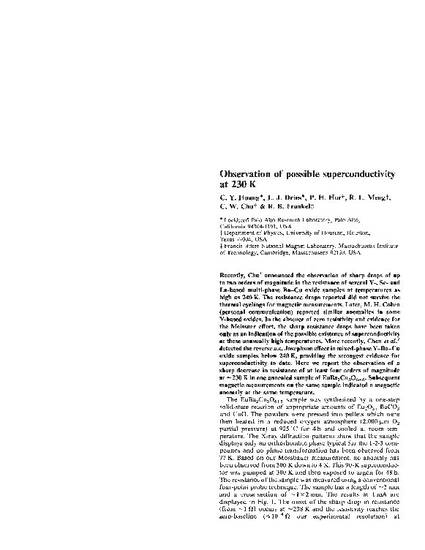
Recently, Chu announced the observation of sharp drops of up to two orders of magnitude in the resistance of several Y-, Sc- and La-based multi-phase Ba–Cu oxide samples at temperatures as high as 240 K. The resistance drops reported did not survive the thermal cyclings for magnetic measurements. Later, M. H. Cohen (personal communication) reported similar anomalies in some Y-based oxides. In the absence of zero resistivity and evidence for the Meissner effect, the sharp resistance drops have been taken only as an indication of the possible existence of superconductivity at these unusually high temperatures. More recently, Chen et al. detected the reverse a.c. Josephson effect in mixed-phase Y–Ba–Cu oxide samples below 240 K, providing the strongest evidence for superconductivity to date. Here we report the observation of a sharp decrease in resistance of at least four orders of magnitude at approx230 K in one annealed sample of EuBa2Cu3O6+delta. Subsequent magnetic measurements on the same sample indicated a magnetic anomaly at the same temperature.
Available at: http://works.bepress.com/rfrankel/142/
